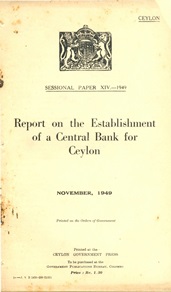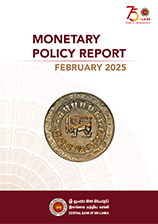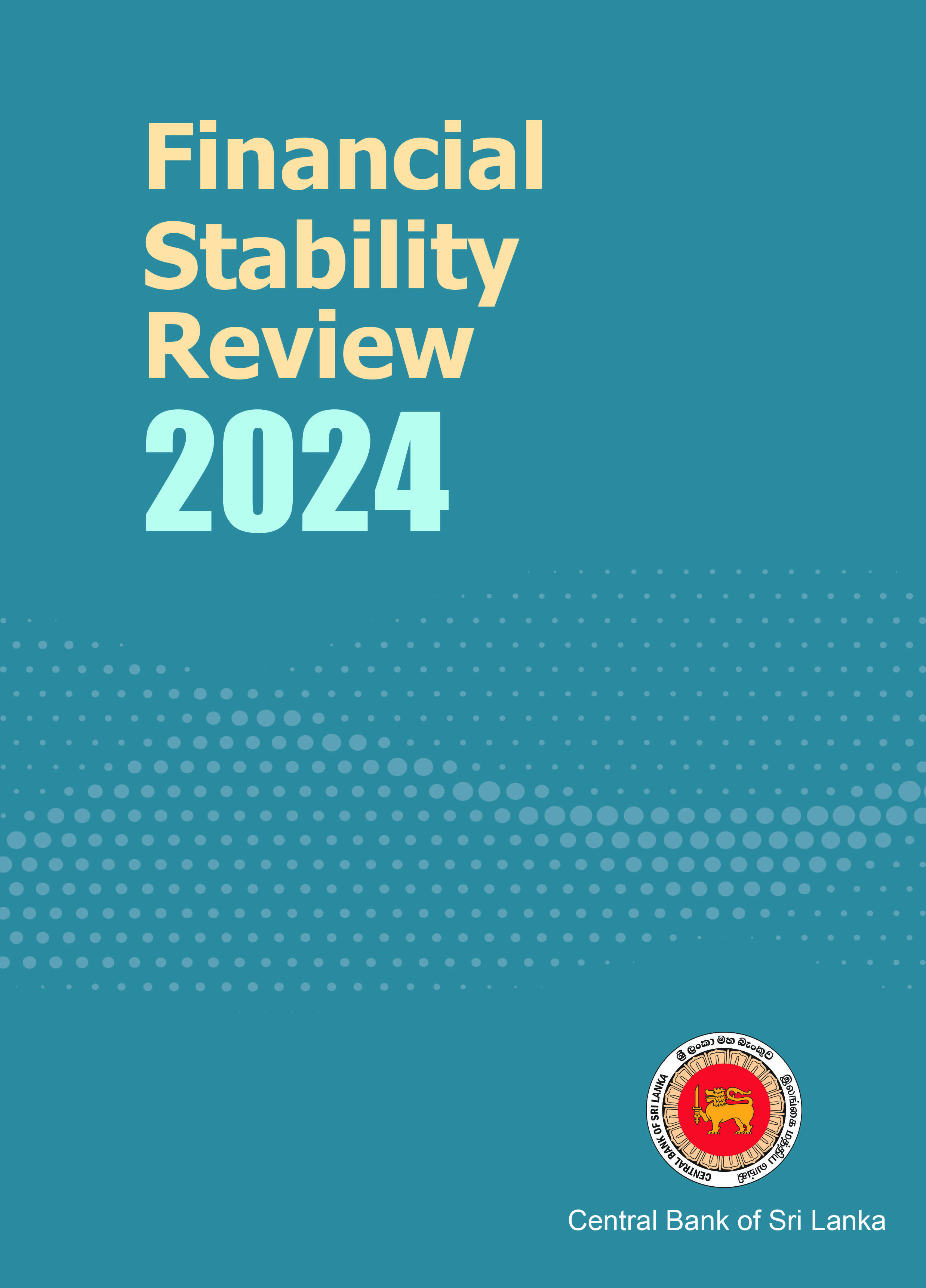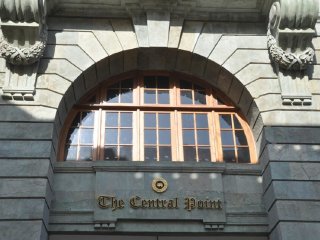Considering the recent public inquiries and the developments observed relating to cryptocurrencies, which are also commonly referred to as “crypto”, the Central Bank of Sri Lanka (CBSL) wishes to reiterate to the public of the significant risks associated with using and investing in cryptocurrency. Cryptocurrency is a type of virtual currency that is generated by private entities and not by a monetary authority of a country. The term ‘cryptocurrency’ refers to a digital representation of value that is implemented using cryptography and Distributed Ledger Technology (DLT) or similar technology. It is observed that crypto-trading is widely promoted by certain entities as a profitable investment.
-
Risks of using and investing in Cryptocurrency
-
IMF Executive Board Approves US$3 Billion Under the Extended Fund Facility (EFF) Arrangement for Sri Lanka
The IMF Board approved a 48-month extended arrangement under the Extended Fund Facility (EFF) of SDR 2.286 billion (about US$3 billion) to support Sri Lanka’s economic policies and reforms.
The objectives of the EFF-supported program are to restore macroeconomic stability and debt sustainability, safeguarding financial stability, and stepping up structural reforms to unlock Sri Lanka’s growth potential. All program measures are mindful of the need to protect the most vulnerable and improving governance.
Close collaboration between Sri Lanka and all its creditors will be critical to expedite a debt treatment that will restore debt sustainability consistent with program parameters.
-
Sri Lanka Purchasing Managers’ Index - February 2023
Purchasing Managers’ Indices for both Manufacturing and Services activities contracted in February 2023.
Manufacturing PMI recorded an index value of 42.3 in February, indicating a continued setback in manufacturing activities on a month-on-month basis.
Services sector PMI dropped to an index value of 48.7 in February 2023 indicating a deterioration across the services sector.
-
Public Lecture on the “Central Bank of Sri Lanka Bill” by Dr. P Nandalal Weerasinghe, Governor of Central Bank of Sri Lanka (Sinhala Medium)
The Central Bank of Sri Lanka Bill, which will be the governing legislation of the Central Bank of Sri Lanka (CBSL) once it is enacted, has been presented to Parliament. Further, it is in the public domain for comments.
In this regard, the Governor of the CBSL, Dr. P Nandalal Weerasinghe will deliver a public lecture in Sinhala medium on the proposed Bill followed by a discussion with a panel of resource persons where the audience will be given an opportunity to clarify concerns, if any.
The event, which is orgainsed by the Centre for Banking Studies of CBSL, will be held on 16 March 2023 from 02.30pm to 4.30pm at the Auditorium of Centre for Banking Studies, No 58, Sri Jayawardenepura Mawatha, Rajagiriya.
Interested parties are invited to attend the event. The lecture will also be livestreamed via official YouTube channel and Facebook page of CBSL.
-
Sale of the Commemorative Coin issued to Mark the 75th Independence Celebration of Sri Lanka
A limited number of uncirculated commemorative coin issued to mark the 75th Independence Day Celebration of Sri Lanka will be available for sale at Rs.6,000 per coin from 09.03.2023 onwards, on first come, first served basis, upon obtaining personal identification details and limiting sales to one coin per person, at the following Central Bank sales outlets.
-
Concessionary Measures to Micro, Small and Medium Enterprises (MSMEs) and Individuals affected by the Present Macroeconomic Conditions
The Central Bank of Sri Lanka (CBSL) has implemented several schemes of debt moratoria and concessions to assist the borrowers affected by the COVID-19 outbreak and subsequent macroeconomic developments, through Financial Institutions (FIs) supervised by CBSL. These schemes included extended repayment periods, concessionary rates of interest, working capital loans, debt moratoria and restructuring/rescheduling of credit facilities for affected borrowers.
-
Former Governor of the Central Bank, Mr. H.B. Dissanayake, Passes Away
 It is with deep sorrow that we announce the demise of former Governor of the Central Bank of Sri Lanka (CBSL), Mr. H.B. Dissanayake.
It is with deep sorrow that we announce the demise of former Governor of the Central Bank of Sri Lanka (CBSL), Mr. H.B. Dissanayake.He passed away at the age of 85 on the 05th of March 2023.
Mr. Dissanayake functioned as the 09th Governor of the CBSL from 1 July 1992 to 15 November 1995. Prior to assuming duties as Governor, he served as Director General of Customs and after retiring from the CBSL, he served as Alternate Executive Director at the International Monetary Fund (IMF) from 1996 -1998.
Mr. H.B. Dissanayake’s remains lie at his home (No. 2/84, Mihiri Uyana, Old Kottawa Road, Mirihana, Nugegoda) until 01.00 p.m. on 07th of March (today) and the cremation will be at the Public Cemetery, Mirihana.
-
The Central Bank of Sri Lanka raises the Policy Interest Rates
The Monetary Board of the Central Bank of Sri Lanka (CBSL), at its meeting held on 03 March 2023, decided to raise the Standing Deposit Facility Rate (SDFR) and the Standing Lending Facility Rate (SLFR) of the Central Bank by 100 basis points to 15.50 per cent and 16.50 per cent, respectively, effective from the close of business on 03 March 2023.
-
CCPI based headline inflation eased in February 2023
Headline inflation, as measured by the year-on-year (Y-o-Y) change in the Colombo Consumer Price Index (CCPI, 2021=100) decreased to 50.6% in February 2023 from 51.7% in January 2023. The decline in the headline inflation is broadly in line with the disinflation path envisaged by the Central Bank of Sri Lanka (CBSL) in January 2023.
-
External Sector Performance - January 2023
The deficit in the merchandise trade account narrowed in January 2023, compared to a year ago.
Export earnings declined while import expenditure remained subdued in January 2023, compared to year earlier.
Workers’ remittances and earnings from tourism continued to increase in January 2023.
Gross official reserves strengthened at end January 2023, while the exchange rate remained stable during January 2023.
The Colombo Stock Exchange (CSE) recorded a marginal net inflow, while foreign investments in the government securities market recorded a marginal net outflow during January 2023.










